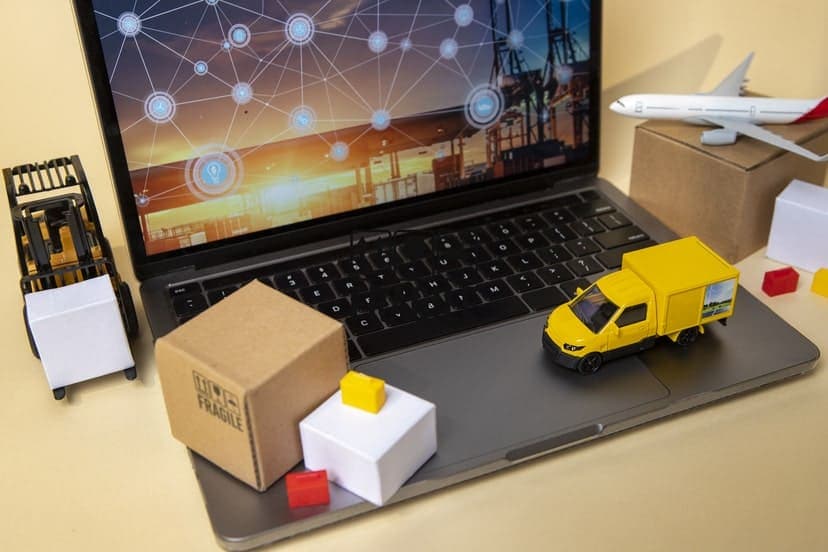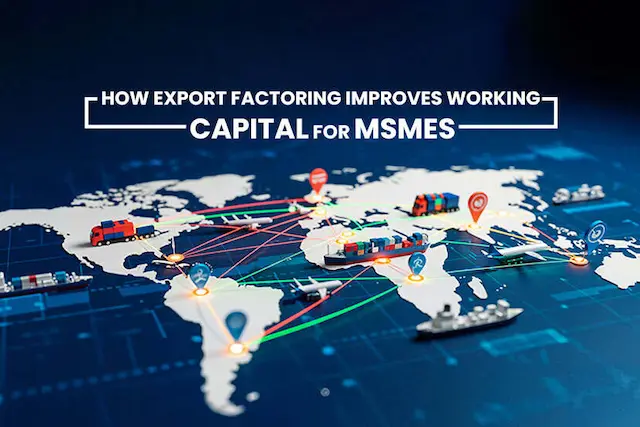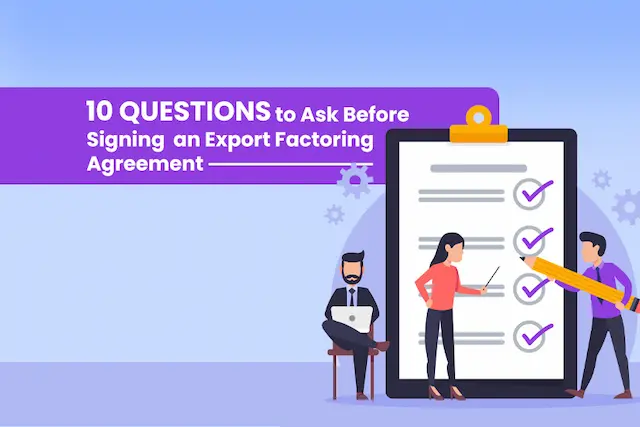In the dynamic world of international trade, the idea of launching your own import-export business is not just enticing but also laden with boundless opportunities. India, with its diverse economy and rapidly evolving global footprint, is a fertile ground for budding entrepreneurs looking to venture into the import-export arena.
However, embarking on this journey requires careful planning, a keen understanding of the market, and a solid foundation in the intricate world of international trade regulations.
This comprehensive guide is your passport to the exciting realm of import-export business in India. Whether you’re a seasoned entrepreneur or a novice, we’ll walk you through the essential steps, from conceptualization to execution.
From selecting the right product to understanding customs procedures and navigating legal intricacies, we’ve got you covered. By the end of this guide, you’ll be equipped with the knowledge and confidence to start your own import-export business in India and tap into the vast global market.
Also Read: Key Government Policies That Support Indian Exporters
So, let’s dive in and explore the exciting world of cross-border commerce.
Stepwise Information on Starting Import-Export Business In India
Let’s delve into each step of starting an import-export business in India in detail.
Step 1: Start a Company with an Attractive Name and Logo
The pivotal first step in launching your import-export business is establishing a legally recognized entity. You have a range of options to choose from, including sole proprietorship, partnership, Limited Liability Partnership (LLP), or a private limited company. Each structure has its unique advantages and compliance requirements, so make this decision thoughtfully.
After selecting your business structure, invest time in choosing an appealing and distinct business name. Your business name is more than just an identifier; it’s a reflection of your brand’s identity and values. Ensure it resonates with your target audience and leaves a memorable mark in the import-export realm.
In addition to your business name, craft a unique and eye-catching logo. A well-designed logo serves as the visual face of your business, making a lasting impression on customers and partners. These early choices are vital, as they define your brand’s identity and set the stage for your import-export journey.
Step 2: Open an Account in a Bank Dealing in Foreign Exchange
When you’re diving into the import-export business, you need a bank account that’s specially equipped for handling international transactions. Look for a bank that knows the ins and outs of foreign exchange. This account will be your go-to place for managing foreign currencies and making payments connected to your imports and exports.
Why is this important? Well, with the right bank account, you get easy access to services that make handling money across borders a breeze. It helps you deal with different currencies smoothly, ensuring you’re on the right side of international money rules. Think of it as your financial partner in the global trade game, simplifying your money matters and helping your business thrive.
Step 3: Get a PAN Card from the Income Tax Department
In your journey to start an import-export business, it’s vital to acquire a PAN card from the Income Tax Department. PAN stands for Permanent Account Number, and it’s like your business’s unique ID. This card is crucial for staying on the right side of tax rules and regulations.
Why is it important? Well, your PAN card isn’t just a piece of plastic; it’s a key tool for handling your finances in the import-export world. It’s used for various financial transactions related to your business. Think of it as your financial compass, ensuring you’re in compliance with tax laws and guiding you through the financial side of your import-export adventures. So, getting your PAN card is a fundamental step in the process.
Step 4: Get the Importer Exporter Code (IEC) Number
In the world of import-export, you need a special code known as the Importer Exporter Code, or IEC for short. This code is your passport for international trade in India. To get it, you’ll need to apply to the Directorate General of Foreign Trade (DGFT).
Why is this IEC number so important? Well, it’s like your trade ID. It’s a unique number that proves you’re a legit player in the global trade game. You’ll use it for all your import and export transactions. Without it, customs clearance – the process of moving goods across borders – becomes tricky.
So, think of the IEC as your entry ticket to international trade. It’s a must-have, and it makes your import-export journey smoother and hassle-free.
Step 5: Choose the Product You Want to Deal In
When it comes to import-export, choosing the right product is a big deal. You need to think carefully about what you want to import or export. Look for products that have demand in the market, so you know people want to buy them. Profitability is key too – you want to make money, after all!
But there’s more to it. You have to check if there are any rules or laws about the products you’re interested in. You don’t want to get into trouble, so make sure your chosen products meet all the quality and safety standards. It’s like making sure your goods are safe and sound for people to use.
So, when you pick the right product, you’re setting the stage for a successful import-export journey. It’s like finding the perfect match for your business!
Step 6: Obtain Your Registration Cum Membership Certificate (RCMC)
In the import-export world, you might come across something called an RCMC. RCMC stands for Registration Cum Membership Certificate. It’s a bit of a mouthful, but it’s essential, especially if you want to get some cool export benefits.
Here’s the deal: Depending on the type of business you’re doing, you might need to get an RCMC from export promotion councils or commodity boards. This certificate is like a stamp of approval for your connection to a specific product category. It shows that you’re part of the club, so to speak.
Why is it important? Well, having an RCMC can help you get export incentives, which are like little rewards for your hard work. So, if you want those extra perks, getting your RCMC is the way to go in the import-export business.
Step 7: Choose the Right Market
In the import-export business, where you sell your products is super important. So, you’ve got to do some detective work to pick the right market. Start by doing research to find out where your products will do well.
Here’s what to consider: Look at how much people want your stuff in different places. That’s called market demand. Check out the competition – if there are already a lot of people selling the same things, it might be tough. And think about growth – is the market getting bigger and better?
You’ve also got to decide if you want to sell your products locally, in your region, or go big and sell them internationally. Each choice comes with its own opportunities and challenges.
So, choosing the right market is like finding the perfect stage for your performance in the import-export show. Do your homework, and you’re on your way to success!
Step 8: Find Buyers
In the import-export business, finding the right people to buy your products or sell them to you is like discovering treasure. If you’re exporting, you want to find buyers; if you’re importing, you’re looking for sellers.
Building these connections is all about relationships. Reliable contacts are your key to success. So, network, attend trade shows, and use online platforms to connect with potential buyers or sellers. The stronger your relationships, the smoother your import-export journey will be.
Remember, trust and good communication are the building blocks of these relationships. So, be reliable, keep your promises, and communicate clearly. It’s all part of the game in the import-export world, and it’s how you make those essential connections for your business to thrive.
Step 9: Price/Costing
When you’re in the import-export game, deciding how much to charge for your products is a big deal. This step is all about pricing and costing.
First, you’ve got to figure out how much it costs to get your products to where they need to be. This includes things like import duties, which are fees you pay to bring products into your country, transportation costs, insurance, and all your other expenses.
After adding up all these costs, you need to set a price for your products. It’s not just about covering your costs; you also want to make a profit. So, your price needs to be competitive, meaning it’s similar to what others are charging, but it should also give you some money left over after all the bills are paid.
Getting your pricing right is like finding the sweet spot in your import-export adventure. It’s a bit of a balancing act, but when you get it right, it’s golden.
Step 10: Get Your Finances in Order
In the world of import-export, staying on top of your finances is like having a well-organized toolbox. You’ve got to keep things in order to run your business smoothly.
That means keeping accurate records of all your transactions, contracts, and financial statements. Think of it as keeping a diary for your business. It helps you know where your money is coming from and where it’s going.
But that’s not all. You also need to follow the rules when it comes to taxes and other legal stuff. Staying compliant with these regulations is a must. It’s like playing by the rules in a game – you don’t want to get into trouble.
So, getting your finances in order is like having a strong foundation for your import-export business. It keeps things running smoothly and helps you avoid problems down the road.
Step 11: Cover Risks Through ECGC (Export Credit Guarantee Corporation)
When you’re in the import-export business, it’s essential to think about the risks involved. You want to protect your business from unexpected problems, like damage to goods during shipping, political instability in other countries, or even buyers not paying you.
That’s where the Export Credit Guarantee Corporation (ECGC) comes in. They offer insurance coverage to shield your business from these risks. It’s like having a safety net.
With ECGC, you can trade with more confidence, knowing that if something goes wrong, you’re covered. It’s like having an umbrella on a rainy day – you stay dry even when the unexpected happens. So, considering ECGC is a smart move to keep your import-export business safe and sound.
For quick funds to manage finances, Credlix is your one-stop shop.
Get quick access to funds with minimal documentation and no hard collateral required, all within 24 hours. Choose Credlix, your trusted Global Supply Chain Finance partner in India.
By following these steps, you’ll be well-prepared to start and operate your import-export business in India efficiently, while also ensuring compliance with legal and financial requirements. Success in this venture will depend on your dedication, market research, and the quality of your business relationships.
How To Process an Export Order?
Processing an export order involves a series of steps to ensure a smooth and successful international transaction. Here is a comprehensive guide on how to process an export order:
1. Market Research
Before you begin, conduct thorough market research to identify potential markets for your products. Analyze demand, competition, and target customers.
2. Establish Business Contacts
Build a network of reliable buyers or distributors in the target market. Attend trade fairs, exhibitions, and join industry associations to make connections.
3. Negotiate Terms
Negotiate the terms of the export order with the buyer, including product specifications, quantity, pricing, payment terms, delivery terms, and incoterms (responsibility for shipping costs and risk).
4. Proforma Invoice
Issue a proforma invoice to the buyer, which includes details of the order, costs, payment terms, and delivery terms. This document serves as a preliminary agreement and can be used for customs and banking purposes.
5. Secure Export Licenses and Permits
Check if your products require any export licenses or permits. Apply for and obtain these documents from the relevant authorities if necessary.
6. Finalize the Sales Contract
Once both parties agree on the terms, formalize the agreement in a sales contract. Ensure it includes all the negotiated details and terms to avoid misunderstandings.
7. Quality Control and Packing
Prepare the goods for export by ensuring they meet quality and safety standards. Properly pack and label the products for international shipment.
8. Arrange Transportation
Select a suitable mode of transportation (e.g., sea, air, or land) and coordinate with a freight forwarder or shipping company for the logistics. Ensure that all shipping documentation is in order.
9. Export Documents
Prepare the required export documents, which may include a commercial invoice, packing list, bill of lading, certificate of origin, and any other necessary certificates or permits.
10. Customs Clearance
Ensure that all customs paperwork and documentation, including the export declaration, are complete and accurate. This step is critical for smooth customs clearance.
11. Payment
Arrange for payment as per the agreed terms. Common payment methods include letters of credit (LC), open account, advance payment, or documentary collection.
12. Shipping
Ship the goods to the destination country. Track the shipment and ensure it arrives on time and in good condition.
13. Import Duties and Taxes
Confirm the import duties and taxes that the buyer is responsible for and that these are paid or settled as required.
14. Documentation Submission
Submit all necessary documentation to the buyer, including the bill of lading and any certificates of quality or origin.
15. Follow-Up
Keep communication lines open with the buyer throughout the shipping and delivery process to address any issues or concerns promptly.
16. After-Sales Service
Provide post-sales support, such as addressing customer inquiries, handling complaints, and ensuring customer satisfaction.
Processing an export order requires careful planning, attention to detail, and adherence to international trade regulations. By following these steps, you can successfully navigate the complexities of exporting goods to international markets.
Less Known Tips and Tricks To Make Your Import-Export Business a Success in India
Here are 30 less-known tips and tricks to help make your import-export business a success in India
Leverage Government Schemes: Explore various government incentives and schemes designed to support import-export businesses.
Specialize in Niche Markets: Focus on specific, underserved markets or unique product categories to reduce competition.
Establish Strong Relationships: Build trust and lasting partnerships with suppliers, buyers, and service providers.
Attend Trade Fairs: Participate in international and local trade fairs to expand your network and discover new opportunities.
Diversify Product Range: Offer a variety of products to cater to different market demands.
Monitor Currency Exchange Rates: Keep an eye on currency fluctuations to optimize pricing strategies and currency conversions.
Optimize Shipping Methods: Choose the most cost-effective and efficient shipping methods, including sea, air, or land transport.
Understand INCO Terms: Familiarize yourself with International Commercial Terms (INCO terms) to avoid misunderstandings in international contracts.
Stay Updated on Regulations: Regularly check for changes in import-export regulations, customs duties, and tax policies.
Use Digital Marketing: Utilize online marketing and e-commerce platforms to reach a global customer base.
Conduct Market Research: Continuously analyze market trends and consumer preferences to stay ahead of the competition.
Join Trade Associations: Become a member of trade organizations to access valuable resources, information, and industry insights.
Manage Cash Flow: Keep a close eye on your finances and establish clear payment terms with your partners.
Insure Against Political Risks: Consider political risk insurance to protect your business from unpredictable geopolitical events.
Quality Assurance: Prioritize product quality to build a solid reputation and customer trust.
Manage Cultural Differences: Understand and respect cultural nuances when dealing with international clients.
Use Technology: Implement advanced software and tools for inventory management, order tracking, and customer relationship management.
Customized Packaging: Invest in attractive and secure packaging to enhance your product’s appeal and safety during transportation.
Understand INR Hedging: Learn about Indian Rupee (INR) hedging to minimize currency exchange risks.
Network With Embassies: Connect with foreign embassies and consulates for assistance in finding potential buyers or sellers.
Invest in Cybersecurity: Protect your business against cyber threats to safeguard sensitive data and transactions.
Sustainable Practices: Incorporate environmentally friendly and sustainable business practices to attract eco-conscious customers.
Leverage e-Commerce Platforms: Utilize established e-commerce platforms for international sales and marketing.
Master INR-USD Conversions: Learn about USD-INR conversion rates and maintain a diversified currency portfolio.
Explore Export Financing: Investigate export financing options to secure capital for your business.
Regularly Update Your Business Plan: Adapt your business plan to evolving market conditions and industry trends.
Establish Clear Contracts: Create comprehensive and legally sound contracts to avoid disputes and misunderstandings.
Online Payment Gateways: Use secure online payment gateways for seamless international transactions.
Cultural Sensitivity Training: Train your team to understand and appreciate cultural differences to foster positive business relationships.
Keep Abreast of Technology Trends: Stay informed about emerging technologies like blockchain, IoT, and AI that can enhance your business operations.
Final Words
In conclusion, venturing into the world of import-export business in India offers immense potential and opportunities for entrepreneurs. However, it requires meticulous planning, market research, and adherence to legal regulations. By following the step-by-step guide provided, you can lay a strong foundation for your import-export business, from selecting the right product to forming valuable connections with buyers and sellers.
Moreover, the less-known tips and tricks can provide you with a competitive edge and help you navigate the complexities of international trade. Remember, success in this dynamic field depends on continuous learning, adaptability, and a commitment to building strong relationships and staying updated with the latest industry trends. With determination and the right strategy, your import-export business in India can thrive in the global market.
Also Read: India’s Road infrastructure and Its Significance to Imports and Exports





